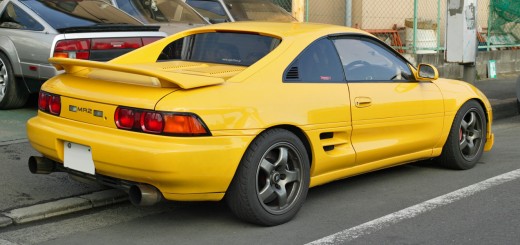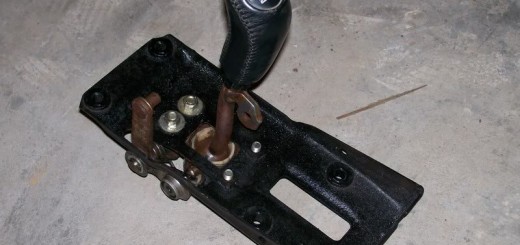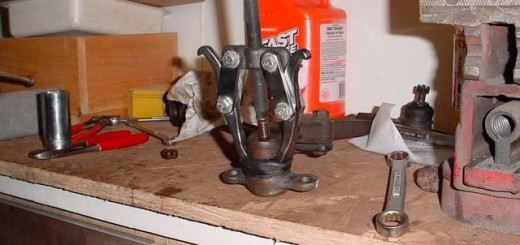This article hopes to describe the tuning process used in the LoveHorsepower Fuel Pressure Regulator and Tuning Video guides. The following equipment was installed:
- Apex-i S-AFC (Super Air Fuel Controller).
- LoveHorsepower Fuel Pressure Regulator Kit (Aeromotive Fuel Pressure Regulator).
- Innovate Motorsports LC-1 Wideband Lambda Cable (Wideband Oxygen Sensor Kit).
- LoveHorsepower Stage Two Water Injection.
- 550cc/min Fuel Injectors from the twin turbo Toyota Supra.
- GTech meter – Pro Competition Version.
- TVIS (Toyota Variable Induction System) and TVSV (Toyota Vacuum Switching Valve) LEDs.
After the above components were installed, the tuning process could begin! First the S-AFC high throttle map was zeroed. The low throttle map was set to -7% at most RPM points. The Low throttle point was set to 30%, and the High throttle point was set to 50%. Our turning setup consisted of the GTech meter to datalog RPM, horsepower, and torque. A laptop was connected to the LC-1 kit to datalog air fuel ratios. We set out with a goal of 11.5 for the air fuel ratio when under full load/full boost. The fuel pressure regulator (FPR) was set to a base fuel pressure of 30psi with the engine off (no vacuum). All of our tests were done with water injection turned on using a two stage setup. The first stage (3 gallon per hour nozzle) coming on at ~9psi of boost and the second (5 gallon per hour nozzle) at ~14psi. Distilled water was injected.
All of our tuning runs were done in 2nd gear by zeroing the GTech meter, and starting off in 1st gear from a stop. We would accelerate normally up to about 3000RPM, then shift to 2nd gear and apply full throttle until ~7200RPM. The first run was done at 15psi of boost, and resulted in a very rich mixture, and poor performance. In fact, the engine was running so rich that below about 5500RPM the engine felt like it was bogging down. It was not happy at all!
Once we have the datalog from the LC-1 and the GTech meter, we could graph both of them on a computer. Then using a graphics program, the resulting graphs were resized to have a similar scale. Here is the result of the first run:

The top graph is the air fuel ratio (AFR) from the LC-1. The bottom graph is the HP and torque vs RPM from the GTech meter. As can be seen, power down low is very poor, and the fuel mixture is well below 10.0 during the engine run. Way too rich! You can also see how the power really nose-dives around 3000RPM where too much fuel starts to come in. The power graph is also very jagged, and indeed, it felt that way.
We then lowered the fuel pressure down to about 25psi, and performed another run. The engine was still running very rich, and was still bogging at lower RPM points, but not as badly. The decision was made to increase boost pressure to about 17psi. This resulted in still poor performance down low in the RPM range, but more pull up top, and with an AFR above 10.0 up top. While doing the tuning in 2nd gear, it’s a good idea to do some runs in 3rd to achieve a higher load on the engine at lower RPM points. This allows the turbo to spool up to full boost while the RPMs are still low (~3500RPM – 4000RPM). Detonation is more likely to occur under high loads and low RPMs rather than high loads and high RPMs. This is one of the reasons why F1 engines spin so fast – there simply isn’t enough time for detonation to occur at those engine speeds. When doing one of these tests, the ECU detected detonation. This was noticed by the behavior of the TVIS LED. When the ECU detects detonation, it will activate the TVIS under any throttle position other than closed. It is possible that the ECU detected what I’ll call false detonation. Sometimes by running so rich the ECU will think it has detected detonation. I’m not sure why this occurs, but it apparently does indeed happen. I also cannot say for certain if this is what happened at this point in time.
I then started new, and increased the fuel pressure to about 32psi. I then began to do more tuning runs again, this time only concentrating on the upper RPM ranges and using boost to get the AFR to come up. At about 18psi of boost (guessing from poor notes!), this is the resulting AFR:

As can be seen above time 14.0 seconds, (about 5000RPM) the AFR starts to come up. This is where the engine really starts to pull very well, even though it is still rich and not even reaching 11.0 AFR. More 3rd gear runs were done, and again detonation was detected by the Toyota ECU as indicated by the LEDs. Dang!
Since the engine experienced detonation, and were still running very rich, we restarted our tuning effort with a different strategy. I decided to increase the base fuel pressure to 38psi and work from there. Now I know what you’re thinking – you were already rich, and now you want to add more fuel? Are you crazy? Well – bare with me.
Certainly after upping the fuel pressure to 38psi, things were rich everywhere. I kept increasing boost slowly until I reached 22.6psi. At this point the upper RPM range (above 5500RPM) started to get close to 11.5AFR. It also really pulled hard up top here. Since the lower RPM ranges were still too rich, and taking fuel out with the FPR would have resulted in too lean a mixture up top, my only option left was to remove fuel with the AFC. One other important note, is that I noticed that the injector duty cycle was going to 100% above 5000RPM, pretty much regardless how much boost I ran (above 15psi). Since the ECU behaves this way, really, the only way to tune the top end is by adjusting fuel pressure. If you use the AFC to tune the top end, I would be very worried about too much timing being added in. So – off to tuning the lower RPM ranges with the AFC by taking out fuel/load. I was very cautious in doing this, and only took out 1-3% change per run, and checked to make sure there was no detonation, and that the AFRs were still good (and rich). I still wanted those ranges to be rich since by telling the ECU there is less load with the AFC, it will advance the ignition timing. After numerous runs, I came up with this:

As you can see, in the upper RPM ranges where the AFR comes up to about 11.4 it really starts to pull great. In the lower RPM ranges, it’s still very rich (probably could be made more lean with the AFC to help low end torque out). That said, at least it’s not in the low 9s anymore! Here are the AFC settings for the low and high map at this point:
| RPM | Hi | Low |
| 2500 | -8 | -8 |
| 3500 | -7 | -7 |
| 4000 | -6 | -7 |
| 4500 | -4 | -7 |
| 5000 | -3 | -6 |
| 5500 | -2 | -4 |
| 6500 | 0 | -2 |
| 7500 | 0 | 0 |
This is a big improvement over our initial 15psi run with the AFC zeroed out – a gain of 81.6HP and 55.8ft-lb of torque with 7.6psi more boost pressure. How’s the T04E-50 trim turbocharger doing? At 22psi the turbocharger is operating is a good range on the compressor map. With a pressure ratio of 2.49, the turbo is pushing approximately 40.0lb/min at 7200RPM. At 4500RPM, it is pushing 25.0lb/min. Plotting these on the T04E-50 trim compressor map:

So, at 7200RPM the turbocharger is in a nice 75% island and cruising along somewhere between 105,620RPM and 118,700RPM. Now that’s some serious revs, and it sounds sweet too! Looks like we could run more boost – more tuning to come.
This documentation in no way replaces the Toyota MR2 Repair Manuals. The purpose of this content is only to provide supplementary information to fellow MR2 enthusiasts. Midship Runabout and its contributing authors will not be held responsible for any injury or damages that may occur as the result of practicing any of the methods or procedures described within this website. Article and photo submissions are property of the contributing author.


